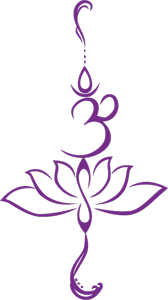Using Medical Massage Therapy as a Treatment for Fibromyalgia
 OK, we’re going to get a little technical on you today! 🙂 I think you’ll appreciate the info. though. Many massage schools teach Medical Massage as a specific technique, but Medical Massage as such simply means that the massage therapist uses standard massage techniques to help resolve or alleviate a medical problem. Other names for Medical Massage include treatment massage or clinical massage.
OK, we’re going to get a little technical on you today! 🙂 I think you’ll appreciate the info. though. Many massage schools teach Medical Massage as a specific technique, but Medical Massage as such simply means that the massage therapist uses standard massage techniques to help resolve or alleviate a medical problem. Other names for Medical Massage include treatment massage or clinical massage.
Medical Massage has been a recognized medical treatment for over 5000 years, with its first instance being reported by the Chinese. Fibromyalgia is one condition that can be greatly helped by Medical Massage.
Fibromyalgia symptoms
Also called fibrositis, fibromyalgia has either become more prevalent or (since being recognized as a syndrome) is more widely reported, affecting approximately 5.8 million Americans. Symptoms include:
- Chronic muscle spasms and pain
- Fatigue
- Sleep disorder
- Stiffness
- Issues with concentration
- Headaches
- Heightened sensory sensitivities
- Food and medication sensitivities
- Irritable Bowel Syndrome
- Depression and anxiety
- Numbness in extremities
- Irritable bladder
- Difficulty and pain with exercise
Pain is the primary complaint of fibromyalgia sufferers, as it affects the body’s soft tissue and muscles, causing painful tender areas known as trigger points. These trigger points often appear under the skin as knots in muscle areas that develop hard crystalline lumps. These crystalline lumps are comprised of waste products that the muscles cannot rid themselves of due to the knots in the muscles impeding proper circulation.
How Medical Massage therapy can help fibromyalgia
The release of endorphins, which reduce pain, is one of the ways Medical Massage helps people with fibromyalgia. Endorphins are hormones that enlist the body’s opiate receptors in creating an opiate effect that dulls the pain of fibromyalgia.
Additionally, when Trigger Point therapy is used on trigger points, it breaks up the crystals in the trigger point knots caused by fibromyalgia and allows the capillaries to offload these toxins into the blood stream where they can be cleared from the body.
Other Medical Massage therapy techniques used with success in fibromyalgia include:
- Myofascial release
Once the trigger points have been dispelled, myofascial release, which involves the application of gentle continuing pressure to elongate the muscle fibers, helps relax the muscles and relieve pain.
- Swedish massage
After the muscle fibers are elongated, they can then benefit from the kneading and friction of the Swedish massage technique, which helps to return adequate blood flow to muscles and the surrounding areas that have been deprived of oxygen and nutrient by the crystalline logjam in the trigger points.
- Passive stretching
With knotted up and painful, spasming muscles, a fibromyalgia sufferer’s joints become stiff because they cannot be fully utilized. With passive stretching, the therapist gently moves the extremities after the muscles have been loosened with Myofascial release and Swedish massage, allowing them to experience a full range of motion utilizing the elongated and reconditioned muscles.
- Hot stone Massage
Some therapists finish off a Medical Massage to treat fibromyalgia with a hot stone massage using heat from the stones placed on the released trigger points to speed up circulation in those areas.
Medical Massage for fibromyalgia avoids deep tissue massage, which uses deeper pressure on the muscles located below where the muscles with trigger points are. Most doctors recommend that Medical Massage for fibromyalgia be done twice a week for four weeks and then once a month for maintenance.


